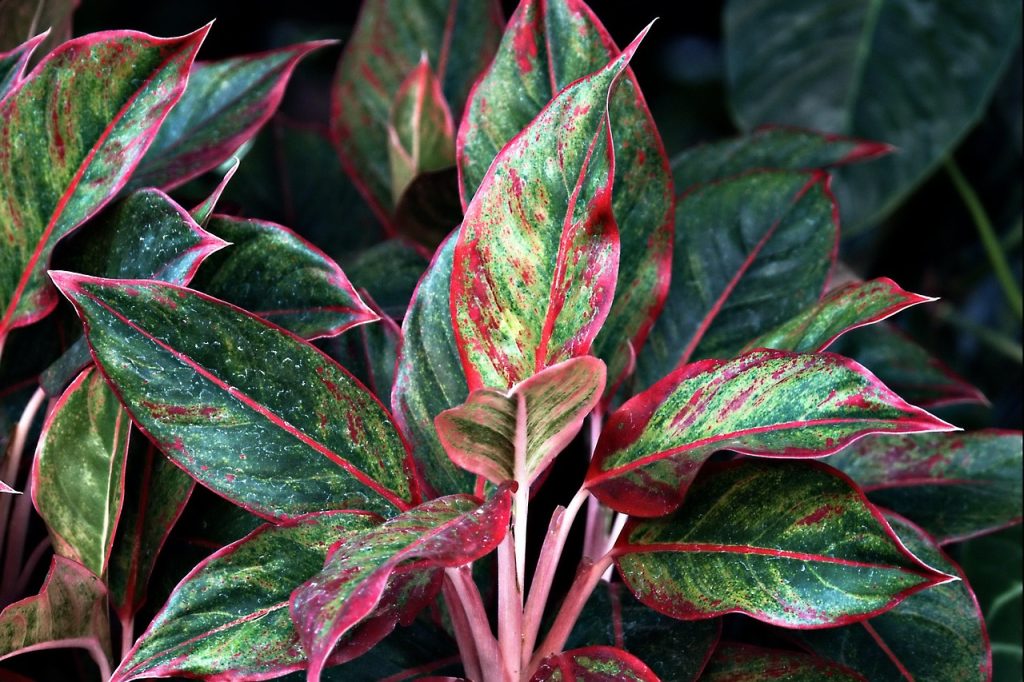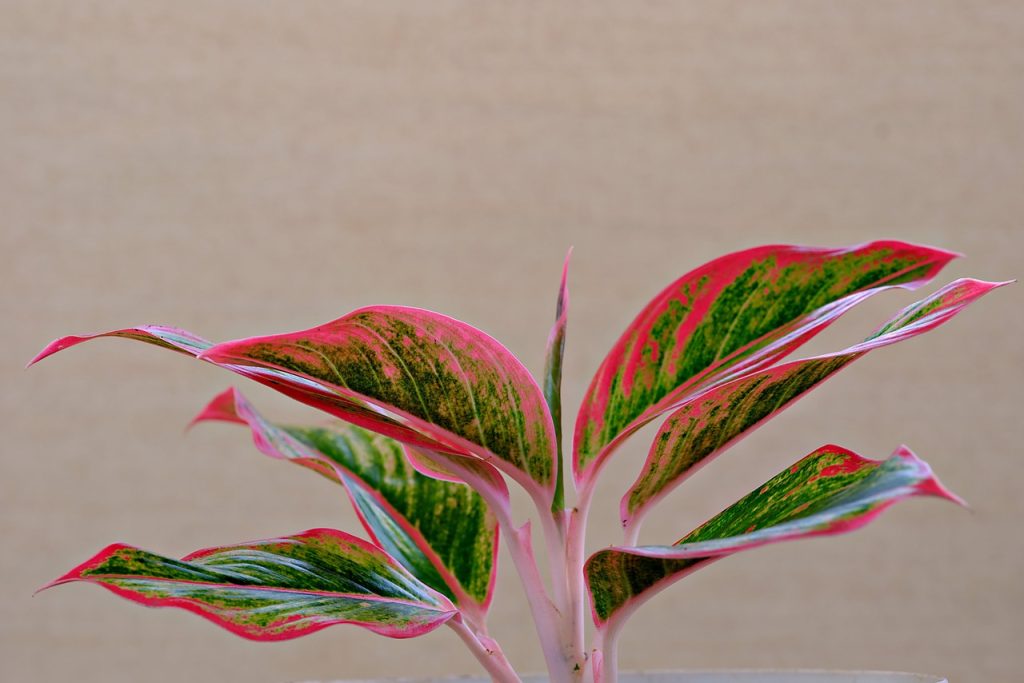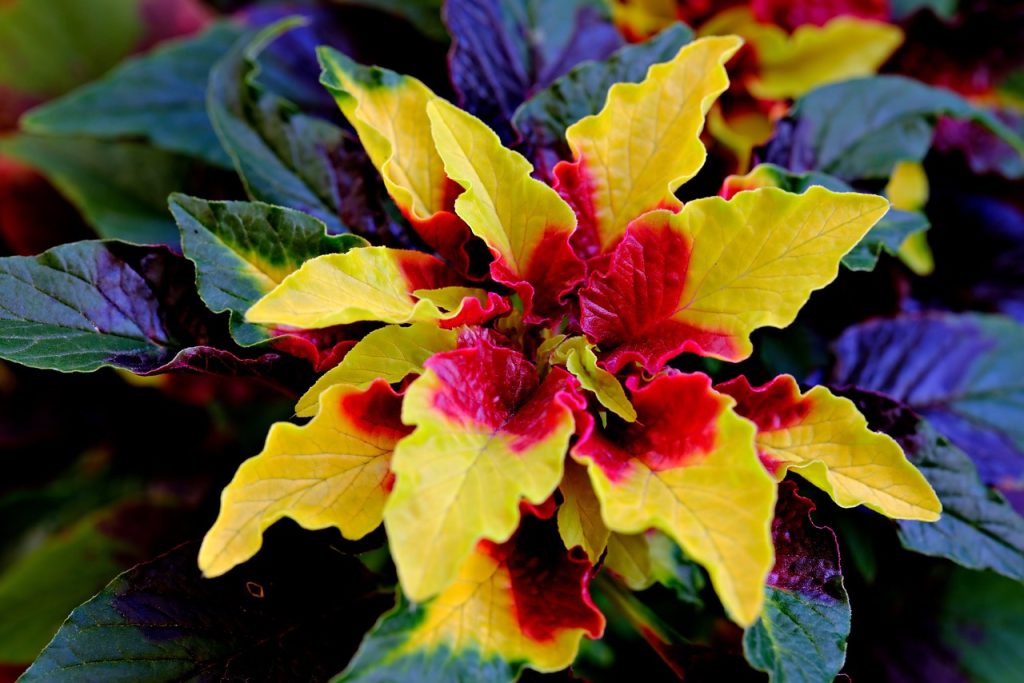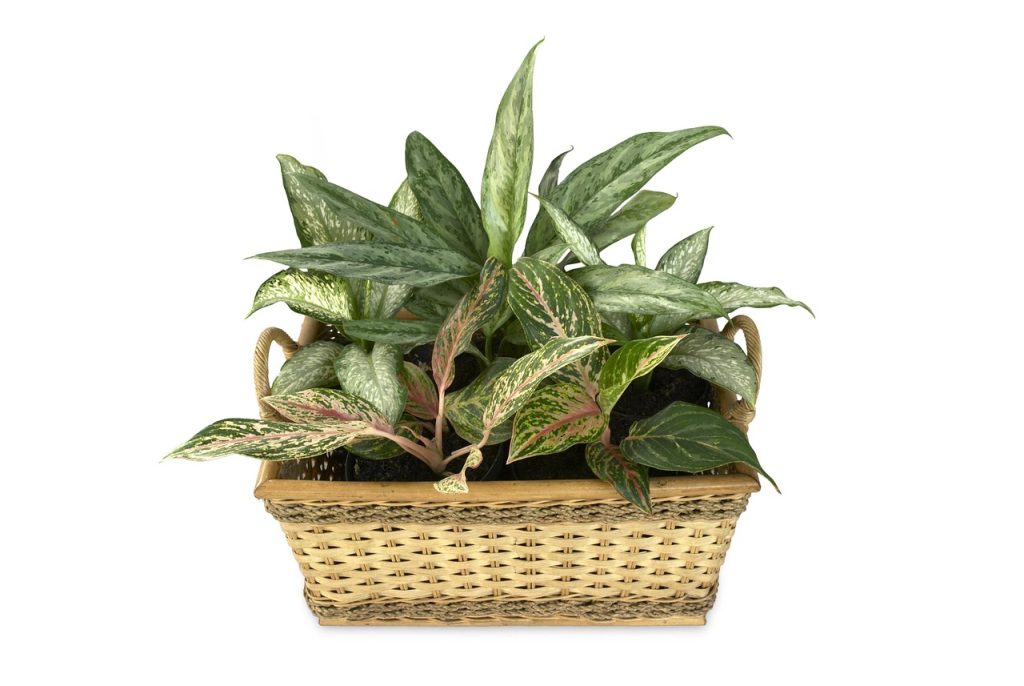Aglaonema, also known as the Chinese Evergreen, is one of the best low-maintenance indoor plants for beginners and busy plant lovers. With its striking foliage in shades of green, silver, pink, and red, this tropical beauty instantly adds color and freshness to any home or office space. Native to Southeast Asia, Aglaonema thrives in low to medium light and grows steadily to 1–3 feet tall indoors. With the right care, it develops lush leaves, strong stems, and impressive longevity—making it a perfect choice for anyone looking to create a thriving indoor garden with minimal effort.
Tip 1: Gentle Filtered Light
Aglaonema plant care thrive in bright, indirect light that mimics their natural forest floor habitat. Direct sunlight burns their delicate leaves, while too little light causes poor growth and fading colors.

Best Room Spots
Place your Aglaonema near these ideal locations:
- East-facing windows with sheer curtains
- North-facing windows for consistent gentle light
- 3-6 feet away from south or west windows
- Well-lit bathrooms with frosted windows
- Bright offices with fluorescent lighting
Avoid placing plants directly on windowsills where harsh sun can reach the leaves. A simple rule: if you can comfortably read a book in the spot without straining, your Aglaonema will be happy there too.
Light Signs to Watch
Your plant communicates its lighting needs through visual cues:
Too Much Light:
- Leaves turn yellow or brown
- Crispy, burnt leaf edges
- Fading of colorful patterns
Too Little Light:
- Leggy, stretched growth
- Small new leaves
- Loss of vibrant colors
- Slower overall growth
Adjust placement gradually when you notice these signs. Moving plants suddenly can shock them, so make small changes over a week or two.
Tip 2: Stable Warm Temperature
Temperature stability is crucial for Aglaonema plant care because these tropical natives prefer consistent warmth without extreme fluctuations.
Ideal Temperature Range
Maintain temperatures between 65°F and 80°F (18 °C and 27°C) for optimal growth. This range supports:
- Active photosynthesis and nutrient processing
- Healthy root development and water uptake
- Vibrant leaf coloration and pattern development
- Natural growth cycles without stress
Room temperature in most homes falls within this range, making Aglaonemas excellent houseplants. Use a simple thermometer near your plant to monitor conditions, especially during seasonal changes.
Drafts to Avoid
Cold drafts and sudden temperature drops stress Aglaonema plant care and can cause serious damage:
Common Draft Sources:
- Air conditioning vents blowing directly on plants
- Frequently opened doors and windows
- Heating vents are creating hot spots
- Ceiling fans create air movement
Signs of Temperature Stress:
- Sudden leaf drop
- Brown or black spots on leaves
- Wilting despite moist soil
- Stunted growth
Create a buffer zone around your plant using other furniture or decorative items to block harsh air currents while maintaining good airflow.
Tip 3: Balanced Water Plan
Proper watering forms the backbone of successful Aglaonema plant care. These plants prefer consistent moisture without being waterlogged, so a thoughtful approach to watering schedules is required.
Finger Test Method
The finger test removes guesswork from watering decisions:
- Insert your index finger 1-2 inches into the soil
- Feel for moisture at this depth
- Water thoroughly if the soil feels dry
- Wait a few more days if still moist
- Check every 3-4 days during growing season
This method works better than rigid schedules because it accounts for seasonal changes, humidity levels, and pot size variations. Different room conditions affect how quickly soil dries out.

Season-Based Adjustments
Aglaonema watering needs change throughout the year:
Spring & Summer (Growing Season):
- Check soil every 3-4 days
- Water when top inch feels dry
- Allow excess water to drain completely
- Expect faster soil drying
Fall & Winter (Rest Period):
- Check soil every 5-7 days
- Let top 2 inches dry between waterings
- Reduce watering frequency by about half
- Watch for signs of overwatering
Always use room temperature water to avoid shocking the roots. Cold water can cause stress and slow nutrient uptake.
Tip 4: Airy Rich Soil Mix
The right soil mixture provides the foundation for healthy Aglaonema growth by balancing drainage, aeration, and nutrient retention.
DIY Potting Blend
Create the perfect Aglaonema soil mix using these ingredients:
Basic Recipe:
- 40% high-quality potting soil for structure and nutrients
- 30% peat moss or coco coir for moisture retention
- 20% perlite for drainage and aeration
- 10% orchid bark chips for additional drainage
Premium Recipe:
- 35% potting soil
- 25% peat moss
- 20% perlite
- 10% orchid bark
- 10% worm castings for slow-release nutrition
Mix ingredients thoroughly before potting. The finished blend should feel light, drain quickly, yet hold some moisture when squeezed.
Repot Timing
Aglaonemas grow slowly and don’t need frequent repotting:
When to Repot:
- Roots growing through drainage holes
- Water runs straight through without absorbing
- Plant becomes top-heavy and tips over
- Soil stays wet for more than a week
- Usually every 2-3 years for mature plants
Best Repotting Time:
- Late spring or early summer
- During active growing season
- When temperatures are stable
- Avoid winter repotting when plants rest
Choose a pot only 1-2 inches larger than the current one. Aglaonemas prefer being slightly root-bound to being in overly large containers.
Tip 5: Mild Monthly Feed
Fertilizing supports healthy Aglaonema plant care by providing essential nutrients for vibrant foliage and steady growth without overwhelming the plant’s natural processes.
Right Fertilizer Type
Choose gentle, balanced fertilizers that won’t burn sensitive Aglaonema roots:
Best Options:
- Liquid houseplant fertilizer diluted to half strength
- Balanced NPK ratios like 10-10-10 or 20-20-20
- Organic fish emulsion for gentle, natural feeding
- Slow-release granular fertilizer for consistent nutrition
Application Schedule:
- Growing season: Monthly feeding from March through August
- Rest period: No fertilizer from September through February
- New plants: Wait 4-6 weeks before first feeding
- Recently repotted: Skip fertilizer for 6-8 weeks
How to Prevent Burn
Fertilizer burn damages Aglaonema leaves and roots, but it’s easily preventable:
Prevention Steps:
- Always dilute liquid fertilizer to half the recommended strength
- Water the plant thoroughly before fertilizing
- Apply fertilizer to moist soil, never dry soil
- Flush soil with plain water monthly to remove salt buildup
Signs of Fertilizer Burn:
- Brown, crispy leaf edges
- Yellow leaves starting from bottom
- White crusty buildup on soil surface
- Wilting despite adequate watering
If burn occurs, flush the soil with clean water several times and skip fertilizing for 2-3 months while the plant recovers.

Tip 6: Boost Humidity
Aglaonema plant care come from humid tropical environments and appreciate extra moisture in the air, especially during dry winter months or in air-conditioned spaces.
Simple Tray Hack
Create a humidity tray using common household items:
Materials Needed:
- Wide, shallow tray or saucer
- Small pebbles or aquarium gravel
- Room temperature water
Setup Steps:
- Fill tray with a single layer of clean pebbles
- Add water until it reaches halfway up the stones
- Place pot on top of pebbles above water line
- Refill water as it evaporates every few days
The water evaporates slowly, creating a humid microclimate around your plant without causing soggy soil conditions.
Grouping Plants Trick
Plants naturally increase humidity through transpiration, so grouping them creates a beneficial humid environment:
Grouping Benefits:
- Plants release moisture through their leaves
- Combined transpiration raises local humidity
- Creates an attractive plant display
- Easier to maintain consistent care routines
Best Plant Combinations:
- Multiple Aglaonema varieties together
- Mix with other tropical plants like Pothos or Peace Lilies
- Include plants with different heights for visual interest
- Ensure all plants have similar light and water needs
Keep some space between plants for air circulation to prevent fungal problems while still benefiting from increased humidity.
Tip 7: Wipe Leaves & Inspect
Regular leaf cleaning and inspection prevent problems before they become serious issues in your Aglaonema plant care routine.
Dust Removal Steps
Clean leaves improve photosynthesis and help you spot problems early:
Weekly Cleaning Routine:
- Prepare supplies: soft microfiber cloth, lukewarm water, spray bottle
- Mist cloth lightly – not soaking wet
- Gently wipe each leaf from base to tip
- Support leaves with your other hand while cleaning
- Check both sides of leaves for issues
Monthly Deep Clean:
- Mix a few drops of mild dish soap in water
- Use the solution on a cloth for stubborn dust
- Rinse with plain water afterward
- Allow leaves to air dry completely
Clean leaves look more vibrant and can better absorb light for healthy photosynthesis.
Spotting Pests Early
Regular inspection during cleaning helps catch pest problems when they’re easy to treat:
Common Aglaonema Pests:
- Spider mites: Tiny webs under leaves, stippled appearance
- Mealybugs: White, cottony clusters in leaf joints
- Scale insects: Brown or tan bumps on stems and leaves
- Aphids: Small green or black insects on new growth
Early Treatment Options:
- Wipe off pests with damp cloth
- Spray with insecticidal soap
- Use neem oil for persistent problems
- Isolate affected plants to prevent spread
Catching pests early means simple treatments work effectively without damaging your plant.
Extra Care Checks
Understanding common mistakes helps you avoid problems and maintain healthier Aglaonema plant care throughout their lifetime.
Common Care Errors
These frequent mistakes can harm your Aglaonema’s health:
Overwatering Issues:
- Keeping soil constantly moist
- Not checking soil before watering
- Using pots without drainage holes
- Watering on a fixed schedule regardless of conditions
Light Problems:
- Placing in direct sunlight
- Keeping in very dark corners
- Not rotating plants for even growth
- Ignoring signs of light stress
Environmental Stress:
- Frequent location changes
- Exposure to cold drafts
- Sudden temperature fluctuations
- Extremely low humidity levels
Quick Fix Guide
Address problems quickly with these solutions:
Overwatered Plants:
- Stop watering immediately
- Check roots for rot and trim damaged sections
- Repot in fresh, well-draining soil
- Place in bright, indirect light to help recovery
Underwatered Plants:
- Water thoroughly until drainage occurs
- Increase watering frequency slightly
- Check soil moisture more often
- Consider humidity boost during recovery
Light-Stressed Plants:
- Gradually move to appropriate lighting
- Remove damaged leaves with clean scissors
- Be patient as new growth adjusts
- Monitor for continued improvement
Propagation Basics
Growing new Aglaonema plants from your existing ones is rewarding and expands your collection without additional cost.

Division Method Steps
Division works best for mature Aglaonemas with multiple stems:
When to Divide:
- During spring repotting time
- When plant has several distinct growing points
- Plant becomes crowded in its current pot
- You want to share plants with friends
Step-by-Step Process:
- Remove plant carefully from its pot
- Gently separate roots by hand or clean knife
- Ensure each division has roots and several leaves
- Let cut surfaces dry for a few hours
- Plant each division in appropriate sized pots
- Water lightly and place in bright, indirect light
Aftercare for Starts
New plant divisions need extra attention while establishing:
First Month Care:
- Keep soil slightly moist but not wet
- Provide bright, indirect light
- Maintain higher humidity if possible
- Avoid fertilizing until new growth appears
- Watch for signs of stress or shock
Signs of Success:
- New leaf growth within 4-6 weeks
- Roots growing through drainage holes
- Plant standing upright without support
- Healthy leaf color and texture
Be patient with newly divided plants as they need time to establish strong root systems in their new homes.
FAQ on Aglaonema Care
Yellow leaves usually indicate watering issues or natural aging. Check soil moisture levels and adjust your watering schedule. Lower leaves naturally yellow and drop as plants age, but multiple yellow leaves suggest overwatering or poor drainage.
Brown leaf tips typically result from low humidity, fluoride in tap water, or fertilizer burn. Increase humidity around your plant, use filtered water, and reduce fertilizer strength to prevent this common problem.
Aglaonemas naturally grow slowly, especially in lower light conditions. Ensure adequate light, proper fertilizing during growing season, and appropriate temperature ranges. Winter growth naturally slows even more.
Aglaonema plants need bright, indirect light but not direct sunlight. Direct sun burns their leaves, while too little light causes poor growth and fading colors. They thrive in the same lighting conditions comfortable for reading.
Water when the top inch of soil feels dry, typically every 5-7 days in summer and every 7-10 days in winter. Use the finger test method rather than following a rigid schedule, as watering needs vary with season, humidity, and temperature.
Provide optimal growing conditions: bright indirect light, consistent warmth, proper watering, monthly fertilizing during growing season, and adequate humidity. However, remember that Aglaonemas naturally grow slowly, so patience is important.
Wrap-Up & Key Takeaways
These 7 proven Aglaonema plant care tips for greener growth provide everything you need to grow healthy, beautiful Chinese Evergreens in your home. Remember that successful plant care comes from understanding your plant’s needs and observing how it responds to your care routine.
Essential Points to Remember:
- Provide bright, indirect light and stable warm temperatures
- Water when soil surface feels dry using the finger test method
- Use well-draining soil and gentle monthly fertilizing
- Maintain humidity and keep leaves clean for optimal health
- Watch for common problems and address them quickly
- Be patient with slow but steady natural growth patterns
Start implementing these care tips gradually and observe how your Aglaonema responds. With consistent attention to these basics, you’ll enjoy vibrant, healthy plants that bring lasting beauty to your indoor spaces.
Ready to improve your plant care skills? Try these tips with your Aglaonema and share your results in the comments below. Your experience might help other plant lovers grow even more successfully!